It looks like you're using an Ad Blocker.
Please white-list or disable AboveTopSecret.com in your ad-blocking tool.
Thank you.
Some features of ATS will be disabled while you continue to use an ad-blocker.
share:
There are numerous carved stones around Scotland, some of which have been dated to around 4 AD. They are recognisable by their beautiful art, carved
centuries ago by the Picts.
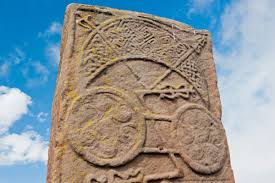
To date, there is no unified theory about either the meaning of the stones or the meaning of the symbols. Some researchers have put forward the idea that the stones were markers of clan boundaries, others that they were grave markers of prominent individuals.
Source article
Work is also being undertaken at the University of Exeter, where an entropy study is exploring the possibility that the symbols are in fact much closer to a modern written language than to random symbols.
The Pictish Stone Database at the University of Strathclyde has catalogued every known stone, and is an invaluable resource.
Similarly,Pictish Stones.org has images of the stones in 3D.
Equally intriguing are the carved stone balls
found in Scotland and dating from as far back as around 3000bc.

Little is known about the people we call the Picts –our ancestors-, but it is not unreasonable to assume that they lived in clan society, as Scotland continued to do until around the 18th century.
It is the pre-Christian geometric patterns that really intrigue me, and I wondered, given the breadth of artistic, pagan, symbolic etc knowledge on ATS, if some of the designs seemed obvious to other people?
This is just speculative, and anybody is most welcome to express an opinion. There is no right or wrong here, we are just wondering together.
The symbols are presented below, along with some suggestions from other sources*.
Any ideas? If you were going to go the trouble of carving a stone, what would you be intent on portraying?
*I won’t list all the authors as sources, for readability, but suffice to say any ideas that are presented are not my own, unless stated otherwise.
The Pictish Beastie - dolphin
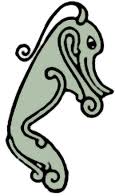
The V rod - mother goddess, Bride/Cailleach,

The z rod – broken arrow ( I think this looks mechanical, husband says a tool for measuring angles)

The ‘tuning fork’ – broken sword
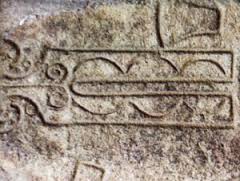
The cauldron – cauldron; earth, sun and moon
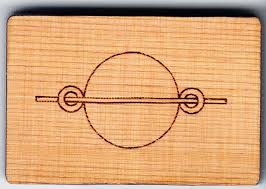
The notched rectangle – inside of a broch
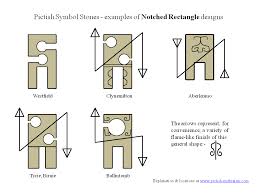
Knotwork

A few more examples given below.

Thanks in advance!

To date, there is no unified theory about either the meaning of the stones or the meaning of the symbols. Some researchers have put forward the idea that the stones were markers of clan boundaries, others that they were grave markers of prominent individuals.
Several theories have been advanced to explain the meaning and function of the symbols. In the absence of written Pictish records, any interpretation is speculative. Nonetheless one theory has emerged as the most plausible and coherent. It is thought that certain combinations of the symbols – which usually appear in pairs – probably represent the names of individual people or families.
On the 350 or so Pictish stones so far discovered, around 40 different symbols have been identified, falling into three distinct groups. The first group of symbols are perhaps the most distinctive aspect of Pictish culture. These are the abstract, or geometric designs: extraordinary, recurrent and consistent. They are stylised in many different ways, but remain remarkably consistent over time and distance. Though they are not representational, some have been named after recognisable objects, such as the ‘tuning fork’ or ‘mirror case’. Others are known only by descriptive names, the most common being the ‘crescent and V-rod’ and the ‘double-disc and Z-rod’.
The second group consists of creatures, real or mythical. The real creatures are those which have at least in the past been indigenous to Scotland, such as snakes, eagles, wolves and bears. But the most common animal symbol is a curious creature with a pointed snout, curling antennae and curved, fin-like limbs. Known as the ‘Pictish beast’, it is sometimes likened to a dolphin or an elephant, but is clearly a hybrid born of the imagination. It is completely unique to the Picts.
The third group represents mundane ‘real life’ objects, often in pairs – mirror and comb; hammer and anvil; tongs and shears. These symbols often appear towards the foot of a stone. It is thought they may qualify the meaning of any symbols carved above.
The symbols occur on stones the length and breadth of Pictland, from the Forth to Shetland. This implies that they were understood by all Picts, and in some way were a common visual language. They are usually combined in pairs – abstract with abstract or abstract with animal. Abstract symbols are more common; and as a rule animal symbols usually only appear in the company of abstract ones.
Source article
Work is also being undertaken at the University of Exeter, where an entropy study is exploring the possibility that the symbols are in fact much closer to a modern written language than to random symbols.
The Pictish Stone Database at the University of Strathclyde has catalogued every known stone, and is an invaluable resource.
Similarly,Pictish Stones.org has images of the stones in 3D.
Equally intriguing are the carved stone balls
found in Scotland and dating from as far back as around 3000bc.

Little is known about the people we call the Picts –our ancestors-, but it is not unreasonable to assume that they lived in clan society, as Scotland continued to do until around the 18th century.
It is the pre-Christian geometric patterns that really intrigue me, and I wondered, given the breadth of artistic, pagan, symbolic etc knowledge on ATS, if some of the designs seemed obvious to other people?
This is just speculative, and anybody is most welcome to express an opinion. There is no right or wrong here, we are just wondering together.
The symbols are presented below, along with some suggestions from other sources*.
Any ideas? If you were going to go the trouble of carving a stone, what would you be intent on portraying?
*I won’t list all the authors as sources, for readability, but suffice to say any ideas that are presented are not my own, unless stated otherwise.
The Pictish Beastie - dolphin

The V rod - mother goddess, Bride/Cailleach,

The z rod – broken arrow ( I think this looks mechanical, husband says a tool for measuring angles)

The ‘tuning fork’ – broken sword

The cauldron – cauldron; earth, sun and moon

The notched rectangle – inside of a broch

Knotwork

A few more examples given below.

Thanks in advance!
Interesting article and thoughts.....
I'm sure there's more to these than just "doodling"...in stone....and meant far more to the picts that anyone is ready to give them credit for.
Always interesting to know how far back my family goes....
I'm sure there's more to these than just "doodling"...in stone....and meant far more to the picts that anyone is ready to give them credit for.
Always interesting to know how far back my family goes....
Looks like the beginning or a written language, or a complete written language, of which these are the symbols, carved in stone that survived. They
could also represent expressions, conventional wisdom, religious beliefs.
Christianity wiped out the ancient culture of Europe, which was not as backward as we were taught in school.
Christianity wiped out the ancient culture of Europe, which was not as backward as we were taught in school.
As odd as it may sound the imagery depicted on the "Z-Rod" actually reminds me of a wormhole. I also find it interesting that the "Z-Rod" always
seems to appear below the "V-Rod" but above the more mundane soldier on horseback imagery, almost as if it was something that they saw as being
above them and controlled by a higher power.
As for the "tuning fork/broken sword" well that reminds me of a key.
As for the "tuning fork/broken sword" well that reminds me of a key.
reply to post by zeroBelief
Hi Zero! I totally agree with you, there is no way someone would take so much time and care into...doodling. If anything springs to mind later on, let me know!!
Poet, yes I think it's a story, a forgotten language, too.
B x
Hi Zero! I totally agree with you, there is no way someone would take so much time and care into...doodling. If anything springs to mind later on, let me know!!
Poet, yes I think it's a story, a forgotten language, too.
B x
Thorneblood
As odd as it may sound the imagery depicted on the "Z-Rod" actually reminds me of a wormhole. I also find it interesting that the "Z-Rod" always seems to appear below the "V-Rod" but above the more mundane soldier on horseback imagery, almost as if it was something that they saw as being above them and controlled by a higher power.
As for the "tuning fork/broken sword" well that reminds me of a key.
A key? I hadn't thought of that at all. It could easily be, now you say that. Good point about the Z rod, let me do some some digging and check if the Z rod is always the highest symbol.
Thanks Thorneblood, that's brilliant!
I already did, and yes it does seem to always be at the highest point on the stones I have seen so far. It is also relatively common, as it appears on
some of the artifacts on your Pictish Stones page. Here are a couple other sites I am trolling through...
Anyway, if one were to take the tip of the arrow as a direction then it would seem to imply that you could only travel one way or if as you said earlier it were "mechanical" in nature then it would imply some kind of locking mechanism.
Rampant Scotland
Dark isle
I wonder why the there isn't a 3d scan of the Picardy stone, which seems to be the oldest and also seems to depict the Loch Ness Monster.
It's interesting just how many of the Scottish legends deal specifically with "sub aquatic" peoples as well the more common stories regarding faeries/sidhe.
Anyway, if one were to take the tip of the arrow as a direction then it would seem to imply that you could only travel one way or if as you said earlier it were "mechanical" in nature then it would imply some kind of locking mechanism.
Rampant Scotland
Dark isle
I wonder why the there isn't a 3d scan of the Picardy stone, which seems to be the oldest and also seems to depict the Loch Ness Monster.
It's interesting just how many of the Scottish legends deal specifically with "sub aquatic" peoples as well the more common stories regarding faeries/sidhe.
edit on 30-1-2014 by Thorneblood because: (no reason given)
reply to post by Thorneblood

I think the 3D ones are the ones with Christian-ised symbols on the back. I think the older ones tend to be carved on one side only, but yes it would be good to see it to be sure.
You know, you're right, there are far more stories of water creatures in Scottish stories than snakes, and yet most people seem to agree that the image above is a serpent in a Z rod. Unless of course, the Picts were re-telling stories which were very ancient to them?
PS thanks for the link to the Dark Isle site, that looks fantastic.

I think the 3D ones are the ones with Christian-ised symbols on the back. I think the older ones tend to be carved on one side only, but yes it would be good to see it to be sure.
You know, you're right, there are far more stories of water creatures in Scottish stories than snakes, and yet most people seem to agree that the image above is a serpent in a Z rod. Unless of course, the Picts were re-telling stories which were very ancient to them?
PS thanks for the link to the Dark Isle site, that looks fantastic.
edit on 30-1-2014 by beansidhe because: PS
reply to post by beansidhe
Re-telling stories would make a lot of sense as most of the earliest history would be oral before it was written/carved for preservation. Maybe it is just because it is 4am for me, or because I tend to fall back on the earliest myths and folklore (especially where the celtic/pictish are concerned) but all of these stones seem to imply travel between two connected worlds. Furthermore when you take into account the "V Arrow/Crescent" shape it seems as if it is less about a goddess figure and more about timing, like sunrise and sunset. This would also fit in nicely to the notion of connected worlds as many myths imply that Dusk and Dawn are the easiest times to travel between this world and the next. The V aspect of it could imply either the rays of the sun at certain times like the solstice or even be a reference to Orion. I wonder if any of the stones are aligned with those like so many other ancient stone relics seem to be.
And again, with both the "aquatic races" and the Sidhe/Faerie myths there is the implication of separate worlds that are both connected and traveling between them.
As for Nessie and Sea Serpents, isn't their a fringe theory that talks about a portal that the creature travels through. I also remember a vague story/theory that the Loch ness Monster is a guardian of that portal, much in the same way that Native Americans associated Sasquatch with guardianship of the doorway between the physical world and the spiritual one.
Eh I am probably just letting my imagination carry me away.
Re-telling stories would make a lot of sense as most of the earliest history would be oral before it was written/carved for preservation. Maybe it is just because it is 4am for me, or because I tend to fall back on the earliest myths and folklore (especially where the celtic/pictish are concerned) but all of these stones seem to imply travel between two connected worlds. Furthermore when you take into account the "V Arrow/Crescent" shape it seems as if it is less about a goddess figure and more about timing, like sunrise and sunset. This would also fit in nicely to the notion of connected worlds as many myths imply that Dusk and Dawn are the easiest times to travel between this world and the next. The V aspect of it could imply either the rays of the sun at certain times like the solstice or even be a reference to Orion. I wonder if any of the stones are aligned with those like so many other ancient stone relics seem to be.
And again, with both the "aquatic races" and the Sidhe/Faerie myths there is the implication of separate worlds that are both connected and traveling between them.
As for Nessie and Sea Serpents, isn't their a fringe theory that talks about a portal that the creature travels through. I also remember a vague story/theory that the Loch ness Monster is a guardian of that portal, much in the same way that Native Americans associated Sasquatch with guardianship of the doorway between the physical world and the spiritual one.
Eh I am probably just letting my imagination carry me away.
edit on 30-1-2014 by Thorneblood because: (no reason given)
edit
on 30-1-2014 by Thorneblood because: (no reason given)
reply to post by Thorneblood
No, I think you are being utterly briiliant and I do think that the stories we now know would have been known to the Picts. I believe that the answer to these stones is in folklore, somewhere.
Funnily enough, there is a theory similar to yours. Bellchamber has wondered if the V-rod is also about timing, but in the way of an almanac or sundial.
I quite like that theory, but it doesn't feel like the whole meaning.
We know, through folklore, that a belief in the otherworld meant going somewhere different, whether in body or mind, and that could be represented through, as you say, the V of the sun's position (or moon's).
The sidhe were notorious for carrying people away to the otherworld, (often through music) and one symbol could be used to depict all the complexities of that tale.
I'm certainly thinking like you, that folklore is key in this.
No, I think you are being utterly briiliant and I do think that the stories we now know would have been known to the Picts. I believe that the answer to these stones is in folklore, somewhere.
Furthermore when you take into account the "V Arrow/Crescent" shape it seems as if it is less about a goddess figure and more about timing, like sunrise and sunset. This would also fit in nicely to the notion of connected worlds as many myths imply that Dusk and Dawn are the easiest times to travel between this world and the next. The V aspect of it could imply either the rays of the sun at certain times like the solstice or even be a reference to Orion. I wonder if any of the stones are aligned with those like so many other ancient stone relics seem to be.
Funnily enough, there is a theory similar to yours. Bellchamber has wondered if the V-rod is also about timing, but in the way of an almanac or sundial.
I quite like that theory, but it doesn't feel like the whole meaning.
We know, through folklore, that a belief in the otherworld meant going somewhere different, whether in body or mind, and that could be represented through, as you say, the V of the sun's position (or moon's).
The sidhe were notorious for carrying people away to the otherworld, (often through music) and one symbol could be used to depict all the complexities of that tale.
I'm certainly thinking like you, that folklore is key in this.
This on the recent posts page, for the 'Secret Society' forum.


Is that just a coincidence, or could one have come from the other? Or have I been looking at symbols for too long, these last few days?


Is that just a coincidence, or could one have come from the other? Or have I been looking at symbols for too long, these last few days?
beansidhe
This on the recent posts page, for the 'Secret Society' forum.
Is that just a coincidence, or could one have come from the other? Or have I been looking at symbols for too long, these last few days?
Maybe. To me, the bottom pic you brought looks like the front view of some headgear. Of course, we know what the Masons are all about?
reply to post by intrptr
Erm, not really. I know they're very good at organising sandwiches for our summer festival in the village, but otherwise, I'm afraid, not really.
I know they have something to do with stone masonry (and what were the makers of these stones if not stonemasons...) and maybe something to do with the Temple of Solomon, from my very quick visit to wikipedia just now.
But hats? I don't know of any headgear links, I'm sorry!
Maybe. To me, the bottom pic you brought looks like the front view of some headgear. Of course, we know what the Masons are all about?
Erm, not really. I know they're very good at organising sandwiches for our summer festival in the village, but otherwise, I'm afraid, not really.
I know they have something to do with stone masonry (and what were the makers of these stones if not stonemasons...) and maybe something to do with the Temple of Solomon, from my very quick visit to wikipedia just now.
But hats? I don't know of any headgear links, I'm sorry!
reply to post by beansidhe
The first image of the z rod (broken arrow) made me think of something showing the planting season. The tip of the right arrow looks like a seed in the ground while the left upward arrow looks like it shows a plant growing. Notice the leaf on the end.
I really don't know how to orient the glyphs. They could also have meant to read them from left to right instead of right to left. Maybe?
The first image of the z rod (broken arrow) made me think of something showing the planting season. The tip of the right arrow looks like a seed in the ground while the left upward arrow looks like it shows a plant growing. Notice the leaf on the end.
I really don't know how to orient the glyphs. They could also have meant to read them from left to right instead of right to left. Maybe?
edit on 30-1-2014 by TheLieWeLive because: (no reason given)
reply to post by beansidhe
Wow, excellent connection. They look like different approaches to the same thing.
The right angle is clearly there in both symbols, the Pictish/British symbol has what appears to be a primitive compass both of which are critical tools for building.
Instead of the "G", the Pictish/British symbol has dual horn of plenty symbols, what looks like a club as in the card symbol, and maybe a shield.
Opens the door about the origins of Masonry possibly.
Wow, excellent connection. They look like different approaches to the same thing.
The right angle is clearly there in both symbols, the Pictish/British symbol has what appears to be a primitive compass both of which are critical tools for building.
Instead of the "G", the Pictish/British symbol has dual horn of plenty symbols, what looks like a club as in the card symbol, and maybe a shield.
Opens the door about the origins of Masonry possibly.
reply to post by TheLieWeLive
That motif is on nearly all of the Z rods, something 'closed' and something 'open'. It definitely looks organic to me, too. Planting seasons?
Dividing the year into sowing, growth and harvest? That's a really good idea, thanks TheLieWeLive.
I don't know how to read the stones, but you're right, it could be top to bottom, right to left - at this point, I have no idea. I'm hoping it will get clearer though!
That motif is on nearly all of the Z rods, something 'closed' and something 'open'. It definitely looks organic to me, too. Planting seasons?
Dividing the year into sowing, growth and harvest? That's a really good idea, thanks TheLieWeLive.
I don't know how to read the stones, but you're right, it could be top to bottom, right to left - at this point, I have no idea. I'm hoping it will get clearer though!
Thanks for sharing this. Rock carvings are fascinating to me. How many people today have actually sat down and tried to carve an intricate design into
a stone? It's rather hard, even with modern tools. Not saying that it couldn't be done with what they had, I'm just saying that it requires a lot
of elbow grease, knowledge and talent.
Raise the Djed and read my Thread:
Art of Shadow Ash and Shade of the Sha
(And my other recent threads as well)
You wanna know about the Symbols?
You gotta get into 'Synonyms with Sin' and 'Sink into Sync' with the 'Cosmic Think' from the 'Mink Sphinx'.
Art of Shadow Ash and Shade of the Sha
(And my other recent threads as well)
You wanna know about the Symbols?
You gotta get into 'Synonyms with Sin' and 'Sink into Sync' with the 'Cosmic Think' from the 'Mink Sphinx'.
poet1b
reply to post by beansidhe
Wow, excellent connection. They look like different approaches to the same thing.
The right angle is clearly there in both symbols, the Pictish/British symbol has what appears to be a primitive compass both of which are critical tools for building.
Instead of the "G", the Pictish/British symbol has dual horn of plenty symbols, what looks like a club as in the card symbol, and maybe a shield.
Opens the door about the origins of Masonry possibly.
They could be, couldn't they? I'm saying that tentatively but they are similar. It's something about the angle they're opened at.
Actually, speaking of building, this was discovered recently:
‘A study of one the most important archaeological discoveries in Scotland for 30 years, a Pictish monastery at Portmahomack on the Tarbat peninsula in Easter Ross, has found that they were capable of great art, learning and the use of complex architectural principles. And, in a discovery described as "astonishing, mind-blowing" by architectural historians, it appears that the people who built the monastery did so using the proportions of "the Golden Section", or "Divine Proportion" as it became known during the Renaissance hundreds of years later. This ratio of dimensions, 1.618 to one, appears in nature, such as in the spiral of seashells, and the faces of people considered beautiful, such as Marilyn Monroe. It can be seen in Notre Dame Cathedral in Paris, the Alhambra palace of Granada in Spain, the Acropolis in Athens and the Egyptian Pyramids, but was thought to have been too advanced for the Picts.’
The Independent
So building was understood by them, and understood at a level we didn't appreciate until now.
Horns, horns of plenty, hmm... I like the way you're thinking about this!
reply to post by muzzleflash
That is a whole lot of information!! I'll do my best, but it might take a while.
Thanks, Muzzleflash.
That is a whole lot of information!! I'll do my best, but it might take a while.
Thanks, Muzzleflash.
new topics
-
Ditching physical money
History: 1 hours ago -
One Flame Throwing Robot Dog for Christmas Please!
Weaponry: 2 hours ago -
Don't take advantage of people just because it seems easy it will backfire
Rant: 2 hours ago -
VirginOfGrand says hello
Introductions: 3 hours ago -
Should Biden Replace Harris With AOC On the 2024 Democrat Ticket?
2024 Elections: 3 hours ago -
University student disciplined after saying veganism is wrong and gender fluidity is stupid
Education and Media: 6 hours ago -
Geddy Lee in Conversation with Alex Lifeson - My Effin’ Life
People: 7 hours ago -
God lived as a Devil Dog.
Short Stories: 7 hours ago -
Police clash with St George’s Day protesters at central London rally
Social Issues and Civil Unrest: 9 hours ago -
TLDR post about ATS and why I love it and hope we all stay together somewhere
General Chit Chat: 10 hours ago
top topics
-
Hate makes for strange bedfellows
US Political Madness: 12 hours ago, 18 flags -
Who guards the guards
US Political Madness: 14 hours ago, 13 flags -
University student disciplined after saying veganism is wrong and gender fluidity is stupid
Education and Media: 6 hours ago, 11 flags -
Police clash with St George’s Day protesters at central London rally
Social Issues and Civil Unrest: 9 hours ago, 8 flags -
TLDR post about ATS and why I love it and hope we all stay together somewhere
General Chit Chat: 10 hours ago, 7 flags -
Should Biden Replace Harris With AOC On the 2024 Democrat Ticket?
2024 Elections: 3 hours ago, 5 flags -
Has Tesla manipulated data logs to cover up auto pilot crash?
Automotive Discussion: 16 hours ago, 3 flags -
One Flame Throwing Robot Dog for Christmas Please!
Weaponry: 2 hours ago, 2 flags -
Don't take advantage of people just because it seems easy it will backfire
Rant: 2 hours ago, 2 flags -
Geddy Lee in Conversation with Alex Lifeson - My Effin’ Life
People: 7 hours ago, 2 flags
active topics
-
Ditching physical money
History • 8 • : annonentity -
The Superstition of Full Moons Filling Hospitals Turns Out To Be True!
Medical Issues & Conspiracies • 21 • : VirginOfGrand -
-@TH3WH17ERABB17- -Q- ---TIME TO SHOW THE WORLD--- -Part- --44--
Dissecting Disinformation • 633 • : Justoneman -
VirginOfGrand says hello
Introductions • 1 • : VirginOfGrand -
Candidate TRUMP Now Has Crazy Judge JUAN MERCHAN After Him - The Stormy Daniels Hush-Money Case.
Political Conspiracies • 740 • : matafuchs -
Should Biden Replace Harris With AOC On the 2024 Democrat Ticket?
2024 Elections • 33 • : BernnieJGato -
Gold and silver prices....woo hoo
History • 84 • : annonentity -
The Democrats Take Control the House - Look what happened while you were sleeping
US Political Madness • 108 • : Zanti Misfit -
BREAKING! Another Bridge Hit by a barge #3 this week.
Mainstream News • 110 • : RookQueen2 -
One Flame Throwing Robot Dog for Christmas Please!
Weaponry • 4 • : Dalamax
